The Environmental Impacts of Black Friday
Posted by Pawan Saunya on
Black Friday is a day of sales, shopping, and overconsumption, and consequently, a day of environmental degradation.
More than 165 million people are expected to go shopping over the Black Friday weekend, primarily in the U.S, in order to snatch up products with prices that have been slashed dramatically.
When prices are slashed, consumers buy products in excess at prices that don’t reflect the true environmental, health, and social costs of the goods. A phone may be on sale for $300, but that doesn’t reflect the cost of the pollution, carbon emissions, and toxic e-waste that comes out of creating such a product.
Electronics are the number one most sought after type of good on Black Friday, resulting in the creation of a ton of e-waste. 50 million tons of e-waste is generated each year, and if left untouched, that number could rise to 120 million tons by 2050. Only 20% of this e-waste is recycled, meaning 80% of it is burned or dumped in a landfill.
E-waste is problematic because the materials it’s made of are toxic, endangering the lives of those, generally in Asia, who handle the waste in an attempt to recover the materials for resell. Children are especially vulnerable to these toxic materials, as absorbing these toxins can have irreversible impacts on their health, potentially stunting their growth and compromising their immune system. Children are often exposed to these toxins because they infiltrate waterways.
Toys and clothing also experience big price cuts during Black Friday. Toys made of plastic are bought in huge amounts, only to be thrown out the next year when something new and improved comes out, resulting in large swaths of plastic waste. Clothes are also bought only to quickly be thrown away as fast fashion trends change, contributing to the excess of textile waste that is seen across the world each year. The average US resident throws out 70 pounds of textiles a year and wears their garments only a few times before they’re over them.
These environmental impacts of Black Friday consumerism are being noticed by consumers, businesses, and policymakers. A group of lawmakers in France want to ban Black Friday citing environmental impacts as their reasoning, businesses like REI are closing their doors on Black Friday to combat consumerism, and many consumers are pledging Black Friday as a buy nothing day.
Other consumers are still taking part in Black Friday, but in a different way. Instead of using Black Friday as a day to overconsume and buy things they don’t need, they’re taking advantage of the sales to purchase sustainable necessities or support small businesses. Some are also using the day as an excuse to invest in sustainable projects.
What do you do on Black Friday?

Kayla Guilliams
is the blog manager for Zero Waste Club, combining her love for writing with her passion for all things environmental sustainability. She is currently a student at the University of North Carolina at Chapel Hill where she is studying journalism, environmental studies, and food studies in hopes of building a career in environmental activism. You can find her on Instagram as @kaylaguilliams.
5 Everyday Habits for a Sustainable Life
Posted by Pawan Saunya onIf you’ve ever tried to adjust your lifestyle to become more sustainable, you’ve probably found yourself getting overwhelmed. The internet can make it seem like you need to overhaul your life overnight in order to save the earth, or that you need to throw out everything you own and start fresh. Lucky for you, it doesn’t have to be that extreme. You can start with easing in sustainable swaps, like a bamboo toothbrush instead of a plastic one, and from there, you can incorporate sustainable habits into your everyday life. Here are 5 everyday things that you can do to make sustainability more of a habit and less of an overwhelming feat.

Reduce Your Food Waste
Worldwide, ⅓ of food that is produced goes to waste. In the U.S, this wasted food accounts for 37 million cars’ worth of greenhouse gases. You can reduce your food waste in two ways: behavior change and composting. Behavior change consists of being more conscious of the food you buy, freezing excess produce and always eating leftovers. Composting consists of putting the inevitable food waste you create (like the peels of fruits and vegetables) into a composting system instead of into the landfill. This reduces greenhouse gas emissions and improves soil health, which helps the soil to sequester more carbon. To start composting, collect your food waste in the freezer or in a tabletop bin (I prefer the freezer because it prevents odors). When it’s full, take it to a composting drop-off at a local community garden or farm, or have it picked up curbside by a service like CompostNow. You can also establish an at-home composting system to turn your food waste into nutrient-rich soil right in your backyard, but most people don’t have the time or space to dedicate to this.

Switch Up Your Commute
The transport sector is growing to be one of the biggest contributors to climate change worldwide. In 2010, transportation was the source of 23% of global carbon dioxide emissions. A lot of these emissions could be curbed by everyone buying an electric car and charging it using renewable energy. However, that’s not a feasible option for most people. Luckily, there are other easy ways to curb your transportation-related emissions that won’t cost you a dime- in fact, they’ll probably save you money.
Ride the bus: One study in the U.S. estimated that riding the bus results in 33% fewer emissions per mile than a car. It’s also cheaper and allows you to read or check your email while commuting, rather than just driving.
Carpool: One car is better than four as far as the environment goes, so collaborate with your coworkers to set up a carpooling system. This will save emissions (and gas money).
Walk: Not everyone has the luxury to live close to work or school, but if you do, consider walking your commute. Not only is it good for the environment, but it’s a great way to get in your daily exercise.
Bike: Biking, like walking, incorporates exercise into your commute, but in a more time-efficient way. If you have bike lanes or greenways along your commute, try taking advantage of them by biking to school or work.

Make Everyday Meatless Monday
It is estimated that animal agriculture contributes to 14% of global emissions. This means that while going vegetarian isn’t the silver bullet of the climate crisis, if everyone incorporated more meatless meals into their diet, a significant amount of emissions could be saved. Eating more plant-based meals is also healthier, more ethical, and tastes great! To ease into meatless eating, try replacing meat with plant-based meat substitutes or with whole foods like beans or tofu.

Create a Zero Waste Kit
Creating a zero-waste kit that you can grab when you head out the door is one of the easiest ways to prevent creating waste when you’re on the go. Include things like:
A reusable water bottle
A reusable coffee cup
Reusable silverware
A reusable straw
A reusable napkin
Reusable handkerchiefs
A reusable container
A reusable bag
When putting this kit together, try to use things you already have, like a glass jar as a coffee cup or water bottle, and an old fabric scrap as a reusable napkin or handkerchief. If you need something for your kit and you have nothing at home that will suffice, try to either buy it used or from a sustainable store like Zero Waste Club.

Vote With Your Dollars
Every time you buy something or use a certain service you are sending a message about what kind of businesses and organizations you support. When you buy gas or plastic water bottles you are supporting the petroleum industry, and when you buy a top from H&M or Zara you’re supporting the fast fashion industry. As you go about your everyday life, remember that you’re voting with your dollars every time you make a purchase, so try to only support companies that are committed to being ethical and sustainable.

What habits make your life more sustainable?

Kayla Guilliams
Is the blog manager for Zero Waste Club, combining her love for writing with her passion for all things environmental sustainability. She is currently a student at the University of North Carolina at Chapel Hill where she is studying journalism, environmental studies, and food studies in hopes of building a career in environmental activism. You can find her on Instagram as @kaylaguilliams.
Zero Waste Travel Essentials
Posted by Pawan Saunya onI love to travel. Seeing the world and experiencing its beauty is an incredible privilege. But, if we want to keep experiencing Earth's breathtaking natural state, we need to help the environment and improve our zero waste game, don’t you think? Traveling zero waste is challenging, but totally doable.
I want to share with you my zero waste travel tips, but before we go further, I just want to state that in general, I travel on a low budget, eat plant-based, and would consider myself “low maintenance”. So, these tips are all based on my personal experience.
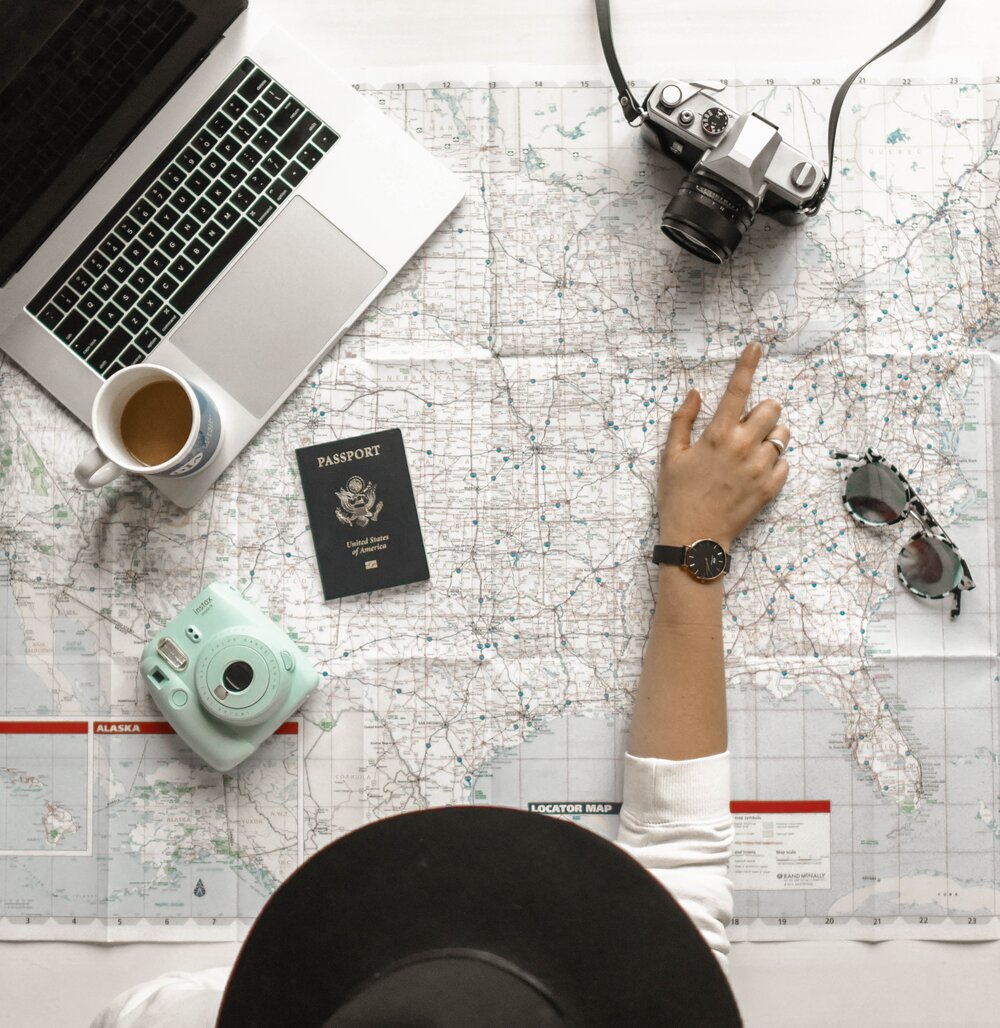
My zero waste travel essentials:
Bamboo coffee cup.
You know what is this for- I carry it around everywhere I go if I know I will want a coffee or tea on the go.
Glass bottle.
I personally use this as water bottle, but you could also use a stainless steel flask, for example.
Cotton tote bag.
This comes with me at all times to carry any snacks I get when I’m out and about, my bamboo coffee mug and my glass bottle. Or, I use it for grocery shopping while traveling.
Bamboo lunch box.
I bring this just in case I need to carry lunch with me or buy lunch on the go.
Wooden cutlery.
If you know you will be eating on the go, this is great option to have instead of plastic ones. You could also just bring whatever silverware you have sitting at home.
Bamboo toothbrush.
This one is quite obvious- I don’t use a plastic toothbrush.
Shampoo bar.
Shampoo plastic bottles take up so much space, and since I travel lightly, meaning I only carry bag that can go with me in the airplane, this is a problem. A shampoo bar is a FANTASTIC easy zero waste option for travelling because they’re plastic-free and they usually come in a little aluminium jar. Cute.
Plastic-free deodorant.
I only use natural deodorants and those usually come in cardboard or glass packaging. They probably can’t be found in your local supermarket, but with a little planning, you can always order a new one right before you run out and be sure to have some when you go traveling.
Loofah.
This might be weird for some, but I don’t use a shower gel. I shower only with water and a loofah and use a coffee scrub (when I’m home) once a week.
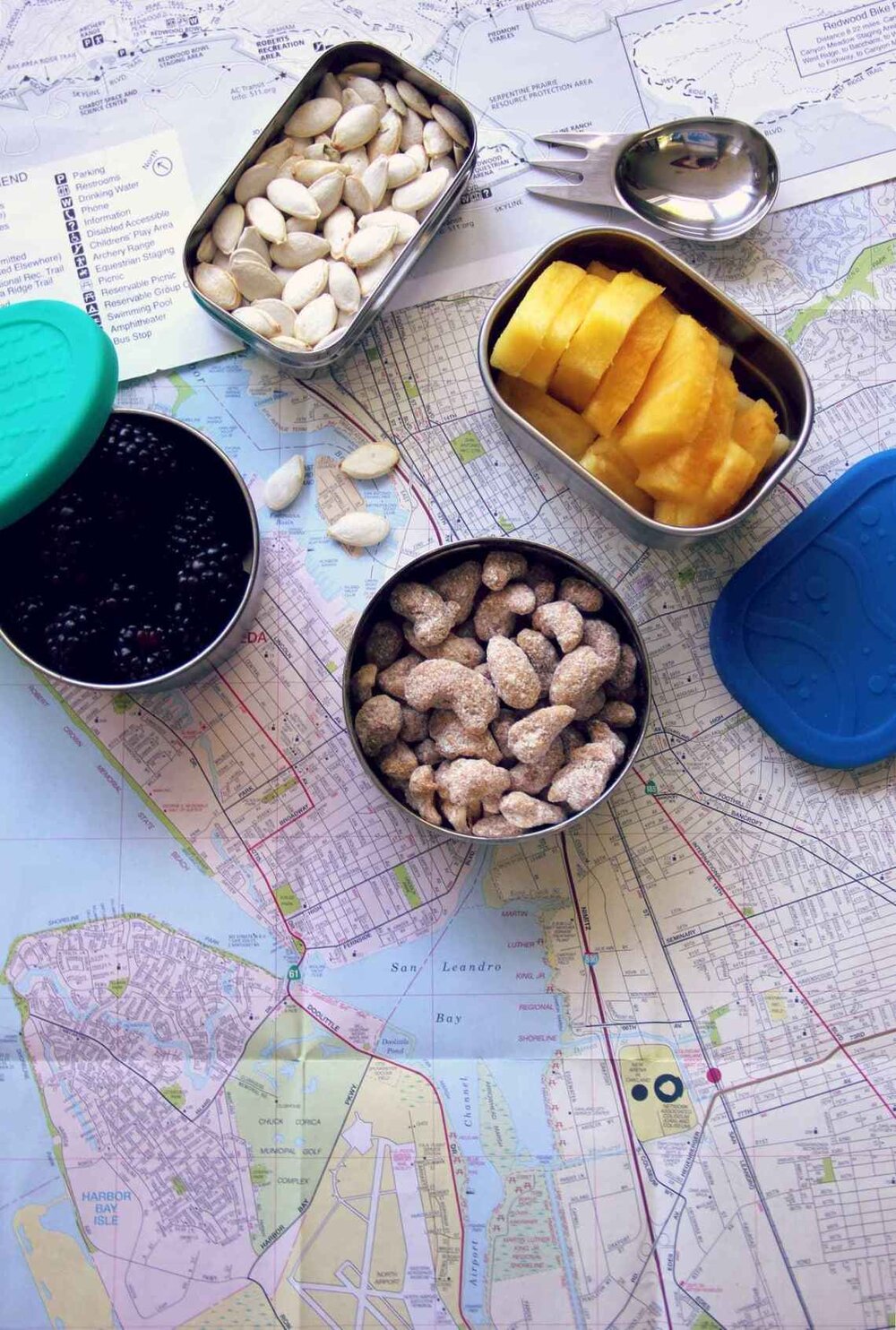
This is my usual go-to list of zero waste travel essentials, but there are some other suggestions I have that I would use if I traveled for a longer period of time, or if I was traveling for a specific occasion.
Bamboo or steel straw.
This is quite straight-forward if you are a straw user. Just have your awesome bamboo or steel straw in your zero waste travel kit.
Menstrual cup or Thinx.
If you are a woman, the natural cycle cannot be re-scheduled, so if you plan to travel and happens that your period at the same time, I would pack my menstrual cup or Thinx period underwear. I do not use single-use pads or tampons anymore, so these would be in my zero waste travel essentials if travel date falls with that special time of the month.
Coconut oil or shea butter.
If I needed a moisturizer, this would be it. Little glass jar and good to go.
Stainless steel razor.
I use stainless steel razor in general and if I needed to use it on longer travel trips, I would definitely take it with me (or not shave at all, single-use shaving razors are out of question for me personally).
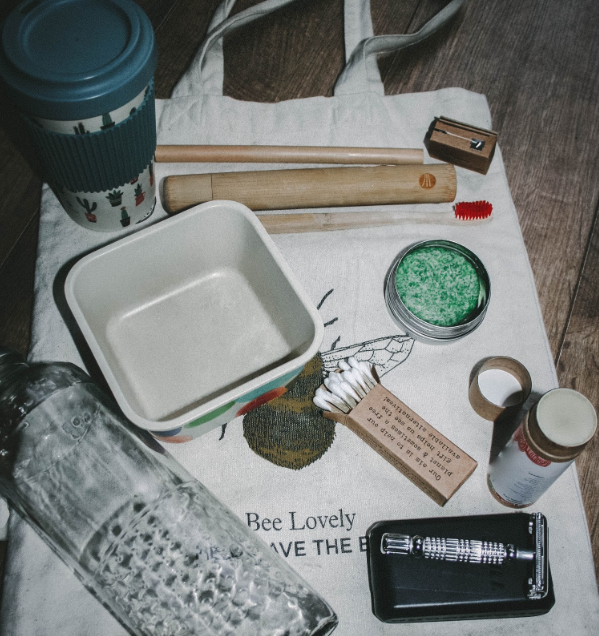
These would be my zero waste travel options, depending on needs and length of travel. It’s understandable if your travel looks a little or a lot different, your zero waste travel kit doesn't have to be the same as mine. The point is we can all reduce our plastic use when we travel by preparing a little in advance and making plastic-free choices.
What would be in your zero waste travel bag? Share some of your ideas- I would love to hear them.
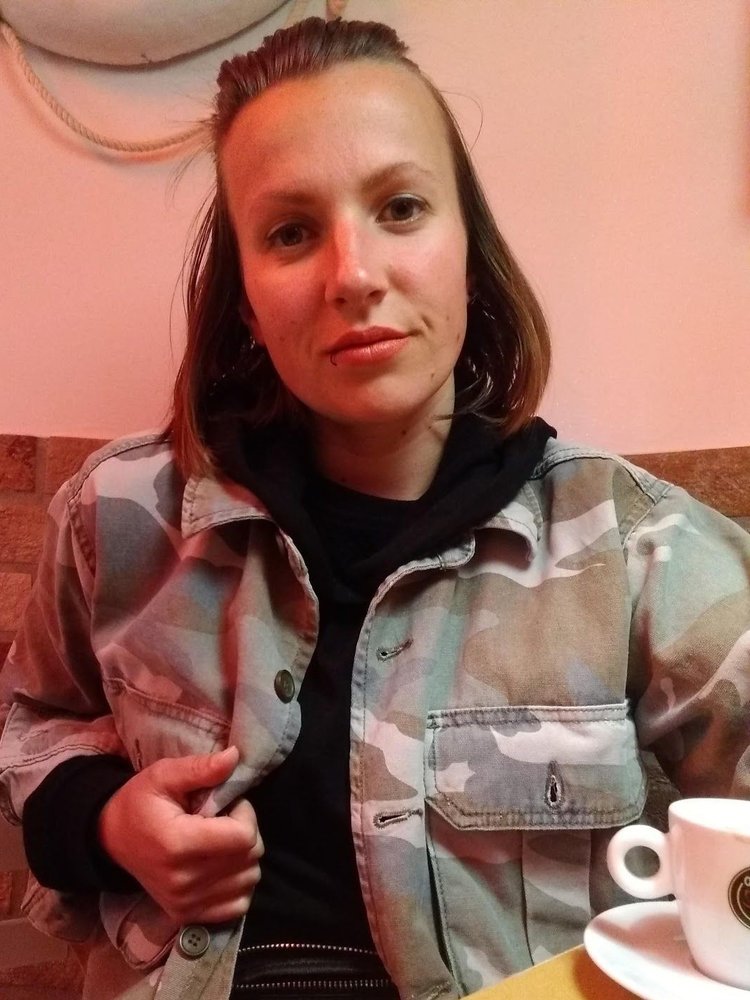
Monta Musinska
Hi! I’m a full-time mom to two amazing boys. In between chasing them around, homeschooling and all other things, I really enjoy nature, reading, meditating, self-development, travelling, capturing moments on camera and, in general, trying to be a considerate and compassionate human being and teaching the same to my boys. Minimalist, zero-waste, and healthy plant-based living is my passion and my way of living, and now as an intern blog writer for Zero Waste Club, I’ll be writing about these things and spreading the message. You can find me on Instagram @montamusinska
How and Why the Beauty Industry Needs to Change
Posted by Pawan Saunya onIt’s no secret that the beauty industry is wildly unsustainable. Between all the plastic packaging and questionable chemicals used in production to the constant push for consumerism in marketing, the beauty world has become notorious for being damaging to the environment- and it’s only going to get worse.
As the reach of beauty gurus and makeup obsessed Instagram influencers expands, so will the growth of the beauty industry. As it grows, it will only become more detrimental to the environment- meaning the industry needs to transform.
While the industry has the capacity to move in a sustainable direction, it won’t do so without a push from consumers. Consumers need to vote with their dollars by supporting sustainable beauty brands that are good for both people and the planet, rather than supporting brands who have no intention of acting sustainably.
The three main areas where the beauty industry impacts the environment are ingredients, packaging, and marketing. Most beauty brands are unsustainable in all three areas, but there are also a lot of brands that are sustainable in all three areas- meaning integrating sustainability isn’t an impossible feat.

INGREDIENTS
THE PROBLEM: A lot of beauty products are laced with harmful chemicals, particularly in the US where there are very few regulations on the beauty industry. The Environmental Working Group is dedicated to informing consumers of what chemicals are in the beauty products they buy, and the results of their research aren’t pretty. They found that 88 different chemicals have been found in more 73,000 beauty products in the U.S. since 2009, and the chemicals they found have been linked to birth defects and cancer.
Some chemicals to watch out for include artificial fragrances, parabens, phthalates, formaldehyde, and oxybenzone. The regulation of these chemicals in products varies depending on the country, so self-regulating by buying products made of natural ingredients is the only way to make sure you’re safe from these chemicals.
THE SOLUTION: Products made from natural ingredients are better for the earth, are usually more effective and are less likely to cause skin irritation. However, when buying natural products you have to be aware of greenwashing. A lot of companies will label their products as natural when they aren’t. To ensure that the product you’re buying is safe and actually natural, read the product label and watch out for harmful chemicals.
A lot of brands are embracing the use of natural ingredients to improve the health of consumers and the quality of their products. RMS beauty sources safe, organic ingredients and are completely transparent about everything that goes into their products. Their founder, Rose-Marie, decided to use this business model after she discovered the heavy metals that were the root of her health issues were also in the beauty products she used every day. Other companies like Au Naturale share the same sentiments, and only use naturally derived and ethically sourced ingredients for the sake of human health and the environment.
Upcircle, another beauty brand, is taking sustainable ingredients to the next level by using food waste to craft their products. They recover leftover coffee grounds, hemp husks and tea leaves that would have otherwise gone to landfills and reinvent them into beauty products like scrubs and face masks. Their products are also ethically and sustainably manufactured locally in the UK, making them the pinnacle of sustainable beauty.
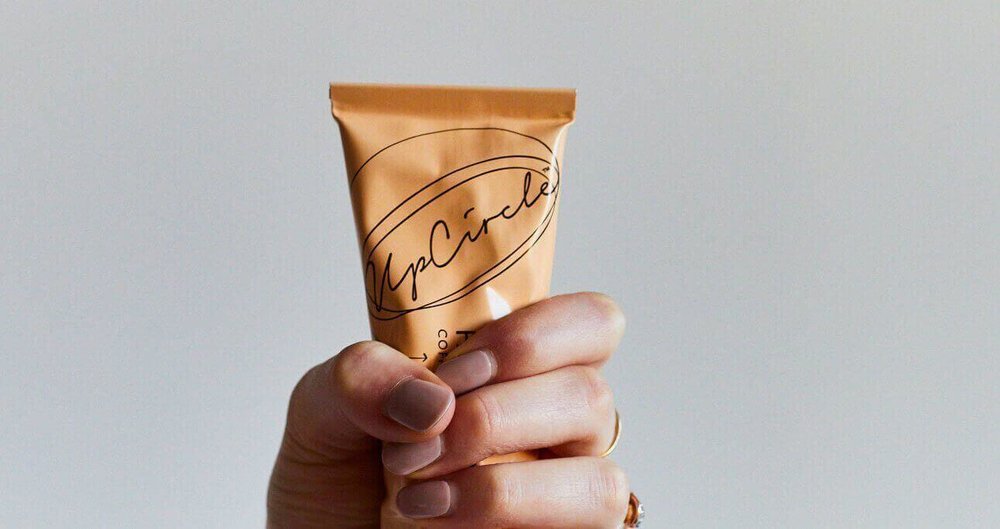
PACKAGING
THE PROBLEM: The beauty industry produces around 120 million units of packaging every year, according to Zero Waste Week, and most of this packaging is made using various types of plastic. The packing is generally hard to recycle- you have to either mail it to companies like TerraCycle, drop it off at select stores that will accept it, or find an innovative way to reuse it. This is viewed as inconvenient to most consumers, so makeup packaging often gets sent straight to the landfill.
THE SOLUTION: There are several options to improve the sustainability of beauty packaging because there are a lot of materials that are by far better than plastic for the environment.
First, there are compostable packaging options. Compostable cardboard is most often used to manufacture boxes, but some companies are innovating different ways to take advantage of compostable options. Some brands, like Meow Meow Tweet and Soué, use compostable tubes to package products like deodorant and lip balm. Other brands, like LOLI, are using compostable bags to ship and package their orders.
Other sustainable materials include glass and aluminum- both of which are infinitely and easily recyclable. Several beauty brands have started packaging their makeup in containers made solely of glass and aluminum. Upcircle, who we mentioned earlier for their ingenious use of sustainable ingredients, packages their face scrubs in aluminum tubes that are 100% recyclable. Aether Beauty sells vegan and cruelty-free eye shadow in a palette that is made of aluminum and is 100% recyclable at the end of its life (and 1% of their sales go to The Rainforest Foundation). It’s also easy to find independent brands on Etsy that sell beauty products that are packaged in glass.
Some companies are taking a different route and are offering refillable makeup to cut down on packaging altogether. Zao allows you to buy products like highlighter, bronzer and eye shadow in a bamboo case once, and then buy minimally packaged refills when you run out of the product. Alima Pure offers a similar model with its refillable compacts, as well as brands like Plaine Products who offer refillable shampoo, body wash, and body lotion. Some companies, like Lush, are completely ditching packaging, and are offering lotion, shampoo, soap, and other products completely free of packaging

MARKETING
THE PROBLEM: A lot of beauty companies market by making consumers feel the need to buy their products to be more beautiful, accepted, and happy. They do this by pushing an ideal look and a “more is better” philosophy. While this has made sales skyrocket, it has done so unethically and unsustainably.
Pushing an ideal look and supporting the idea that buying items is a path to happiness is not only detrimental to the mental health of consumers, but to the earth as well. Women have become increasingly insecure, and have been buying beauty products at increasingly high rates. This has pushed beauty brands to use more natural resources, energy, water, and plastic to produce more and more products.
This sheer increase in demand is obviously bad for the environment, but it goes deeper than that- its a vicious cycle. As consumers buy more products, they value the products they buy and have less, so they increasingly feel unfulfilled with what they have and lean on consumerism as a crutch to happiness, leading them to buy more products and start the cycle all over again.
THE SOLUTION: In order to spare the mental health of their consumers and decrease the environmental impact of excessive consumerism, beauty brands need to embrace diversity in their marketing. They need to stop pushing this idea that there’s an “ideal” way to look, and need to push for their consumers to embrace their imperfections and use cosmetics as a way to have fun and embrace their beauty, rather than using them as a way to fit an “ideal” standard of beauty. This can be done by having diverse marketing that includes acne, diverse body shapes, and people of all color.

Overall, the beauty industry needs to be transformed for the sake of our planet. As consumers, we can aid in this transition by voting with our dollars. When we choose to buy from brands that use recyclable packaging and natural ingredients and market themselves using diversity and imperfections, we’re investing in the sustainable beauty industry and not supporting companies that don’t value sustainability as a priority. This will force brands to change their practices if they want to make it in the beauty world.

Kayla Guilliams
Is the blog manager for Zero Waste Club, combining her love for writing with her passion for all things environmental sustainability. She is currently a student at the University of North Carolina at Chapel Hill where she is studying journalism, environmental studies, and food studies in hopes of building a career in environmental activism. You can find her on Instagram as @kaylaguilliams.
5 Fashion Brands That Are Embracing Zero Waste
Posted by Pawan Saunya onThe fashion industry is a huge producer of waste. In the U.S. alone, more than 15 million tons of textile waste is generated per year. Where does this waste go? Predominately landfills. Globally, 85% of textile waste goes to a landfill, and 95% of what goes to the landfill could actually be recycled. This excessive production of waste (in addition to water and soil pollution) has led the fashion industry to be named the second most polluting industry in the world- just after oil.
Since the fashion industry generates so much waste, there is a lot of opportunity for businesses and individuals alike to recover textile waste and upcycle it. By upcycling, textiles that would have otherwise gone to the landfill (where they would sit and produce methane, a powerful greenhouse gas) are transformed into profitable products. This process of upcycling fits directly into the mold of a circular economy- the ideal economy for social, environmental, and economic sustainability.
There are a lot of businesses out there who are tapping into the opportunity to upcycle textile waste. Here are five businesses that are embracing sustainable fashion, positioning themselves to be zero waste leaders of a circular fashion industry.

Lowie is a slow fashion brand that is working to make upcycled products out of recovered textile waste, as well as garments made of sustainable fibers. They sell beeswax wraps that are made 100% from the textile waste they generate from sewing and cutting garments, khadi skirts that are made from leftover stock, and “jumpigans” that made from 100% upcycled cashmere that will go on sale this September, right in time for winter. Not only does Lowie sell sustainable products, but they encourage a sustainable mindset. By offering free repairs on all of their products, they encourage consumers to buy less and repair more to reduce their fashion footprint.

Zero Waste Daniel is a company based in New York that is pioneering the zero waste fashion industry. The owner, Daniel, designs and sells unique pieces that are made through a closed-loop production and sewing system called ReRoll that produces zero waste. The company is making waves in the fashion industry for selling artfully designed pieces that are good for both the planet and the people that make them. The company aims to rewrite industry norms and inspire other brands to reimagine clothing design in a way that doesn’t include waste.

Osom sells socks and other goods that are made from up to 95% upcycled textiles. They are committed to donating at least 1% of their annual profits as part of their mission to help the earth. They exemplify their commitment to sustainability by using a low impact production system that requires no water for production and uses no chemicals, dyes, or pesticides. They hope to close the loop in the fashion industry by inspiring other brands to incorporate recycled textile waste into their methods of production.

Antiform clothing designed and made in England using reclaimed materials. They sell tees, dresses, jumpers, leggings, clutches, skirts, and hats that are sustainably manufactured in England. They are working to combine heritage crafting techniques with reclaimed materials to sell unique and responsible clothing to all.

Kiriko is a company based in Portland, Oregon that sells traditional Japanese textiles. The idea of the company sprang from the Japanese spirit of Mottainai, which is a value that encourages wasting nothing and recycling everything. They want to instill meaning and value back into the fashion industry by utilizing intentional and traditional craftmanship. Through their production system, they strive to create no waste and to craft durable garments that inspire their customers to love the pieces for years to come, rather than buying new clothes every season. Their method of designing and manufacturing is part of a slow fashion movement that inspires consumers to buy less clothing and to place more value in the clothing that they already have.

Unlike most fashion brands, these businesses view their pieces as investments. They aren’t priced to where you buy a piece and wear it once- they are high-quality garments that are meant to be invested in and worn year after year after year. This enforces the mindset of viewing our purchases as investments, which drives a sustainable economy as it incentivizes us to become more conscious consumers. If you can’t afford to invest in high-quality clothes, there are plenty of thrift stores full of cheap, used clothes that are all a sustainable choice.
Luckily for you, the most sustainable fashion items are the ones already in your closet. Wear and love what you already have, and don’t let social media and cultural norms pressure you into buying new clothes and wearing a different outfit every single day- I promise you look great in what you already have.

Kayla Guilliams
Is the blog manager for Zero Waste Club, combining her love for writing with her passion for all things environmental sustainability. She is currently a student at the University of North Carolina at Chapel Hill where she is studying journalism, environmental studies, and food studies in hopes of building a career in environmental activism. You can find her on Instagram as @kaylaguilliams.
